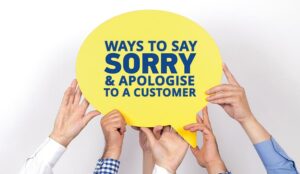Paul Cooper argues that you get a real financial return from providing great customer service.
I have noticed in the last couple of years that there is starting to be more talk about the good organisations and less about the bad. This must be good.
And the really encouraging thing is the number of times that this is directly related to the customer service difference, especially with regard to contact centres.
Of course, great service is a touchy-feely, emotional thing that makes both the staff and customers feel better when it works. But there is always a good business case for doing it anyway. This is not a case of “the cost of having to give good service” but it’s about “the return you get from giving great service”.
Even if one just focuses on the negatives for a minute, just think of all the savings on rework, headcount turnover, training new staff, finding new customers (instead of focusing on the ones you’ve already got) and much more when it’s all going well.
Add to this the overwhelming evidence of the financial benefits of both staff and customer retention to both morale and performance, and the effect this can have on reputation, and profits, and it’s a wonder we have to argue the case at all. As Sally Gronow from Welsh Water once put it: “Good customer service is cheaper than bad!”
And yet, we still do. All the time. Relatively few organisations out there are still really getting it, across all sectors. Oh, sure, they make glib statements like “our staff are our most important asset” or “we live for our customers”, but how do they prove this to themselves or, more importantly, to their staff and customers.
Jack Welch, CEO of General Electric for 20 years, once said: “If I had to run a company on three measures, those measures would be customer satisfaction, employee satisfaction and cash flow.” The difference was, he actually meant it, and amen to that.
The truth is that until more organisations have the nerve to believe it, and do it, they won’t improve or really get the message that they COULD get, for free, every day from the staff or the customer.
This may come as a blindingly obvious statement to some, but many employees and customers actually care passionately about organisations. They actually want an organisation to get things right, and even improve.
They aren’t there to sabotage efforts, and they have a stake in the success too, whether it’s because they have a job/career, or whether it is so much hassle to make a change – just think of bank accounts. However, they are so rarely asked for really useful feedback, they give up. Ah, you say, but we’re always doing customer satisfaction surveys and employee surveys. Hmm.
If they are done, do they really give feedback of the helpful kind or are they just answering things the organisation wants to know, and stroking its ego. If the organisation is running at an over 90% rating on customer satisfaction for good/excellent, which many probably are, month in month out, what’s the point in measuring it?
Do customers actually think they’re wonderful? I doubt it.
One major organisation I know took their customer satisfaction data and stopped lumping together the top two ratings, on which they had averaged 92-93% for 4 years. They now just measure the top, excellent rating. Of course, the figure fell to around 42%, but improvements in this rating were harder to achieve but much more meaningful.
They had to think of totally different ways to please customers before they could get the needle to move. It has now moved, significantly, and there is much more evidence of genuine satisfaction out there from their customers.
Similarly with staff, it isn’t a series of answers to tick boxes that will improve employee satisfaction and morale. The real issue is – are they being listened to, their ideas captured, their opinions canvassed?
Some recent research has shown that in call centres management were worrying about the so-called “angry customer” and the stress effect that this had on the staff.
When staff were finally actually asked, the real issue was the fact that the software and hardware of their system was so poor that it was not supporting them in providing good service to their customers, and THAT was why there were both angry staff, and angry customers.
The staff wanted to give great service, but were frustrated in their efforts.
Perhaps this is linked to the fact that we are told that the two most frequent comments made by staff in call centres when asked are “Nobody asks us anything…” and “Nobody tells us anything…” .
And yet these people really do care.
So, is your organisation asking the right questions, and the right people? I really hope so because the results can make all the difference in the world!

Paul Cooper
Paul Cooper is a Director of Customer Plus
Author: Jo Robinson
Published On: 31st May 2011 - Last modified: 15th Aug 2025
Read more about - Customer Service Strategy, Angry Customers, Customer Experience (CX), Customer Service, Service Strategy, Staffing





















